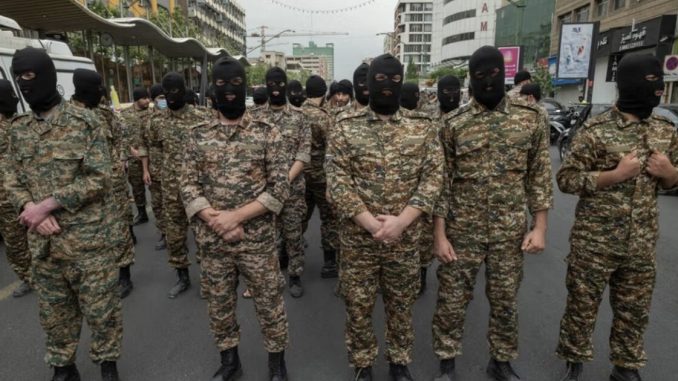
B-Roll of B-2 Spirit. (U.S. Air Force)
| Published June 22, 2025
The United States is moving several B-2 stealth bombers to the Western Pacific U.S. island of Guam in the second week since Israel’s attack on Iranian nuclear facilities and bases, U.S. officials reportedly confirmed.
🧭 1. What’s the “$700 million proxy war” claim?
The figure comes from US State Department estimates: Iran reportedly provided Hezbollah with around $700 million annually, part of a broader proxy support network including Hamas, Palestinian Islamic Jihad, the Houthis, and Shiite militias across Iraq, Syria, and Lebanon. According to reports, Iran’s proxy strategy as a global threat matrix—but these proxies are a long-established component of Iran’s regional strategy dating back decades.
🔍 2. Scope of the IRGC-Quds Force’s network
-
The Quds Force (≈5,000 strong) specializes in funding, training, and equipping non-state groups abroad—Hezbollah, Hamas, Houthis, Iraqi/Syrian militias .
-
Specialized units—Unit 700, Unit 190, Unit 18000—oversee logistics and arms smuggling through covert routes into Syria, Lebanon, Yemen, etc.
-
The result is a sprawling network exerting influence in at least six countries, capable of both regional and asymmetrical global operations.
📌3. Why now?
-
Recent Israeli strikes have targeted Iran’s nuclear, missile, drone-attack, and Quds Force leadership—including commanders tied to proxy coordination.
-
This campaign has disrupted Iran’s “no war, no peace” proxy equilibrium and diminished its deterrent posture.
-
Tehran is digging in, enhancing indigenous systems like Bavar‑373 air defenses, while also being pushed toward harsher asymmetric responses: sleeper cells in the West, cyber operations, Houthi maritime attacks, and more covert global sabotage.
📅 4. Concerns and Ramifications
-
Greater IRGC domestic power
Deepening involvement in Iran’s economy (oil, telecom, construction), giving it internal leverage—even as leadership weakens. A possible regime collapse could empower an even more hardline IRGC regime -
Global asymmetric threats
Intelligence warnings are sounding that Iran could activate sleeper cells in the West, target dissidents or Israeli interests, and escalate cyberattacks . -
Regional destabilization
Houthi attacks, heightened Hezbollah activity, and cyber proxies pose ongoing risks to shipping, regional security, and Western-aligned nations. -
Diplomatic tensions
Allied concern over escalation is growing, with the US deploying B‑2 bombers to Guam and urging a need for de-escalation—even as nuclear talks are stalled.
🧩 Bottom Line
The $700 million per year claim has roots in solid estimates of Iranian funding to Hezbollah—but it’s one part of a vast, multifaceted proxy network built and managed for decades. Today’s Israeli strikes have shaken that system, triggering a likely shift toward asymmetric tactics and potentially unleashing secondary threats in both Middle Eastern and Western arenas.
Iran’s international status now hangs in a precarious balance: any attempt to topple its regime or nuclear deterrence invites not only internal consolidation under the IRGC but also serious global repercussions.
SOURCES: THE GATEWAY PUNDIT – The IRGC Threat Matrix: Iran’s $700 Million Proxy War Against the West
THE SUNDAY GUARDIAN – Iran’s proxies are a threat to peace in Middle East




